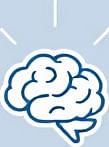Biohacking Basics for Reducing Mental Overload
 by Marlene Keeling
by Marlene Keeling
Explore simple biohacking strategies to ease cognitive load in daily life. Learn practical methods to manage mental demands, boost focus, and enhance productivity without overwhelming routines. Ideal for students and professionals seeking better mental clarity.

In everyday scenarios, mental overload can affect focus and well-being. Biohacking offers straightforward approaches to handle this. For instance, basic biohacking involves adjusting habits to support brain function.
The Concept of Cognitive Load
Cognitive load refers to the amount of working memory in use. This can build up from tasks like studying or working. When it becomes too much, it leads to fatigue. biohacking steps in as a way to lighten this burden through simple changes.
People often face high cognitive demands in their routines. Students might deal with exams and assignments, while professionals juggle meetings and deadlines. Recognizing these pressures is the first step to improvement.
Practical Biohacking Tips for Offloading
One effective method is using tools to externalize thoughts. For example, apps for note-taking can store ideas, freeing up mental space. This allows for better concentration on immediate tasks.
Physical activity plays a key role too. Regular walks or exercises can help clear the mind. biohacking basics include incorporating movement to reduce stress and improve cognitive performance.
Nutrition also matters. Choosing foods that support brain health, such as those rich in omega-3s, can make a difference. Simple dietary tweaks might include adding nuts or fish to meals, which aid in maintaining energy levels.
Building Daily Routines
Creating routines is essential. Start with a morning ritual that sets a calm tone. This could involve a few minutes of deep breathing before starting the day. Such practices help in managing overall mental demands.
Technology can be an ally. Devices like smartwatches track sleep patterns, offering insights into rest quality. Better sleep directly impacts how well the brain handles information.
In work settings, breaking tasks into smaller parts prevents overwhelm. This technique ensures steady progress without taxing mental resources. For students, scheduling study sessions with breaks can enhance retention.
Monitoring and Adjusting
Keeping track of personal responses is important. Journals can note what works and what doesn’t. Over time, this builds a customized approach to cognitive load management.
Social connections matter as well. Talking with peers about challenges provides support and new ideas. Sharing experiences can lead to discovering effective strategies.
Environmental factors influence cognitive load too. A tidy workspace reduces distractions, allowing for smoother focus. Simple changes, like organizing a desk, can have noticeable effects.
Long-Term Benefits
Adopting these biohacking elements leads to sustained improvements. Enhanced focus means more efficient work and learning. This approach encourages a balanced lifestyle, promoting overall health.
For professionals, reduced mental overload translates to higher productivity. Students may find it easier to absorb information and perform better in academics.
Incorporating these tips requires consistency. Start small and build from there, observing positive changes over time.
Exploring Further Techniques
Beyond basics, consider mindfulness practices. These involve short sessions of focused attention, which help in resetting the mind. Combining this with biohacking creates a comprehensive strategy.
Hydration is another overlooked aspect. Drinking enough water supports cognitive function, preventing sluggishness. It’s a simple yet impactful habit.
In summary, biohacking offers accessible ways to address cognitive load. By applying these tips, individuals can achieve greater mental clarity and efficiency in daily life.
